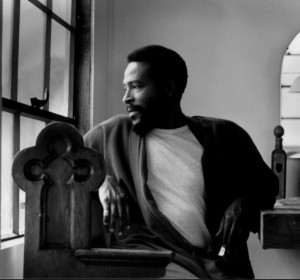 Where did all the blue skies go?
Where did all the blue skies go?
Poison is the wind that blows from the north and south and east…
Oil wasted on the ocean and upon our seas
Fish full of mercury…
Radiation under ground and in the sky
Animals and birds who live nearby are dying…
How about this overcrowded land
How much more abuse from man can she stand?
“Mercy Mercy Me” is no doubt the first and perhaps the only Top 40 hit to address the sad state of the environment. It was the second single released from “What’s Going On,” Marvin’s groundbreaking 1971 concept/protest album that confronted issues like injustice, the Vietnam War, police brutality, poverty, and other social ills.
In 1991 Motown Records released this moving “Mercy Mercy Me” video, seven years after Marvin was shot and killed by his father during a domestic dispute. Numerous celebrities appear throughout the video to show their support for environmental protection. Marvin’s message resonates now as much as ever, in these days of fracking, oil spills, and carbon dioxide emissions.
© Dana Spiardi, April 22, 2015
]]> Ol’ Sly Stone sure fell into the category of different folks, alright. He was never destined to live among the ranks of everyday people. He was one outrageous, mega-talented dude. Nobody on the planet had a funkier, chunkier Afro than Sly. That ‘Fro simply knew no bounds, extending into sideburns that should have been called wideburns. Sly shared honors with Jimi Hendrix for best dressed ’60s ebony God. But while Jimi personified the gypsy as hippie with his bright paisley prints and ruffly shirts, Sly was the true sartorial spaceman in knee boots, satin, and studded leather. He had ATTITUDE.
Ol’ Sly Stone sure fell into the category of different folks, alright. He was never destined to live among the ranks of everyday people. He was one outrageous, mega-talented dude. Nobody on the planet had a funkier, chunkier Afro than Sly. That ‘Fro simply knew no bounds, extending into sideburns that should have been called wideburns. Sly shared honors with Jimi Hendrix for best dressed ’60s ebony God. But while Jimi personified the gypsy as hippie with his bright paisley prints and ruffly shirts, Sly was the true sartorial spaceman in knee boots, satin, and studded leather. He had ATTITUDE.
Sly took James Brown’s innovative sound to a new level, pioneering a style and persona that influenced all the funk stars that followed, from George Clinton and Rick James to Prince and Michael Jackson. Where do you think the term funkadelic came from, anyway? It emerged from Sly’s blending of funk rhythms with psychedelic rock – with Stax soul, gospel and Motown pop thrown into the caldron to keep things interesting.
Born Sylvester Stewart on March 15, 1944, Sly was raised in a deeply religious family in Vallejo, California. As young teens, he and siblings Freddie, Rose, and Vaetta released a 78rpm single, “On the Battlefield of the Lord,” as the Four Stewarts. Sly spent a few years as a DJ on San Francisco radio station KSOL, then went on to form his first band, Sly and the Stoners. Meanwhile, Sly’s brother Freddie was fronting his own group, Freddie and the Stone Souls. The two bands merged in December 1966 to form Sly and the Family Stone, with Sly on organ, vocals and a variety of other instruments, Freddie on lead guitar, Larry Graham on bass, Cynthia Robinson on trumpet, and white boys Gregg Errico on drums and Jerry Martini on saxophone. A year later, Stone sister Rose joined the lineup as vocalist and keyboardist. Sly recruited a high school gospel group, which featured Sly’s sister Vaetta, to provide background vocals. He named them Little Sister.
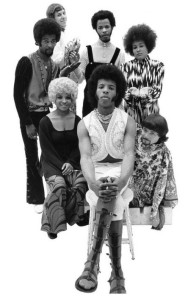 Sly and the Family Stone was revolutionary at the time, not just for the unusual racial mix, but because the group’s women weren’t merely there to provide eye candy, backing vocals, or dance moves. They played instruments and had a presence all their own. Cynthia Robinson became known for her impromptu shout-outs: “All the squares go home!” On songs such as “Dance to the Music,” various band members took turns singing lead on each verse, an uncommon style at the time. Larry Graham’s distinctive “slapping” bass guitar technique became a signature element that defined all funk music that followed.
Sly and the Family Stone was revolutionary at the time, not just for the unusual racial mix, but because the group’s women weren’t merely there to provide eye candy, backing vocals, or dance moves. They played instruments and had a presence all their own. Cynthia Robinson became known for her impromptu shout-outs: “All the squares go home!” On songs such as “Dance to the Music,” various band members took turns singing lead on each verse, an uncommon style at the time. Larry Graham’s distinctive “slapping” bass guitar technique became a signature element that defined all funk music that followed.
They churned out a string of great singles: “Everyday People,” “Thank You (Falettinme Be Mice Elf Agin),” “Everybody Is a Star,” “Hot Fun in the Summertime,” “Family Affair,” and “I Want to Take You Higher.” Their songs discouraged hate and discrimination and encouraged peace, understanding, self-respect and simple, shameless fun. The band made a huge splash at Woodstock and appeared on mainstream TV programs like the Mike Douglas Show and Dick Cavett. I can still remember the hype surrounding Sly’s 1974 in-concert wedding extravaganza at Madison Square Garden. The bizarre PR stunt was chronicled in a New Yorker article, satirically titled “The Biggest Event This Year.”
But like most artists of that era, the band’s members fell prey to heavy drugs. Internal bickering lead to a frequently changing lineup of musicians. Sy was under pressure from the Black Panthers to replace the two white musicians, Errico and Martini, with “brothers.” The band’s record company, Epic, was demanding a higher output of marketable material.
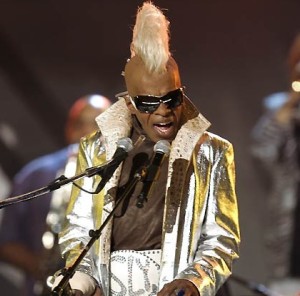 Sly forged ahead into the 1970s, but soon succumbed to near-paralyzing drug addiction, often missing gigs or just refusing to play. His spending sprees, paranoia and outlandish behavior were legendary. When the Family Stone was inducted into the Rock and Roll Hall of Fame in 1993, Sly was nowhere to be found – right up till the minute his fellow members walked to the podium to accept the award. Then, he suddenly appeared, mumbled a few words (“See you soon”) and vanished. For the past 25 years he’s been one of the music world’s most notorious “whatever happened to…?” personalities. He appeared briefly – sporting a blonde mohawk and wearing a silver lamé suit and sunglasses – for a Sly and the Family Stone tribute at the 2006 Grammy Awards, but ended up abandoning his bandmates by leaving the stage during a performance of “I Want to Take You Higher.” Several years later he attempted a comeback of sorts, when he released “I’m Back! Family & Friends” in 2011. It was his first album since 1982’s “Ain’t But the One Way,” and featured such guests as Jeff Beck, Ray Manzarek, Ann Wilson, Johnny Winter.
Sly forged ahead into the 1970s, but soon succumbed to near-paralyzing drug addiction, often missing gigs or just refusing to play. His spending sprees, paranoia and outlandish behavior were legendary. When the Family Stone was inducted into the Rock and Roll Hall of Fame in 1993, Sly was nowhere to be found – right up till the minute his fellow members walked to the podium to accept the award. Then, he suddenly appeared, mumbled a few words (“See you soon”) and vanished. For the past 25 years he’s been one of the music world’s most notorious “whatever happened to…?” personalities. He appeared briefly – sporting a blonde mohawk and wearing a silver lamé suit and sunglasses – for a Sly and the Family Stone tribute at the 2006 Grammy Awards, but ended up abandoning his bandmates by leaving the stage during a performance of “I Want to Take You Higher.” Several years later he attempted a comeback of sorts, when he released “I’m Back! Family & Friends” in 2011. It was his first album since 1982’s “Ain’t But the One Way,” and featured such guests as Jeff Beck, Ray Manzarek, Ann Wilson, Johnny Winter.
A few years back, while channel surfing, I heard a TV announcer say, “Coming up next: Sly Stone – nearly homeless!” Well, I just had to stay tuned. It turns out that Sly has evolved into a broken down man. He lives in an old white van in a rundown area of LA, and makes music on a laptop computer. He runs an electrical line from his mobile home to a friend’s nearby house, where he goes to take showers. In an August 2013 interview with Alexis Petridis of The Guardian, Sly’s road manager Neal Austinson said the mercurial singer is fairly healthy, and “for the most part” clean of drugs. He says Sly “likes to smoke a little weed and maybe have a cocktail before he gets onstage, but he’s 70 years old, he can’t do what he used to do, no one can at that age. And you know, coke is a very expensive habit to maintain.”
But within the past week, Sly suddenly became $5 million richer, after an L.A. jury found Sly’s former manager and entertainment attorney guilty of diverting royalties that were owed to him over the past 20 years. Now, let’s just hope the cash doesn’t go up his nose.
Best of luck to you, Sly, on your 72nd birthday. You burned out fast, but when it came to funkadelic rock and soul, you did it first and you did it best. And, with your wild multi-colored band of guys and girls, you were rock’s first equal opportunity employer.
Here’s the original Family Stone lineup on Soul Train.
By Dana Spiardi, March 15, 2015
]]> The focus of this post is to examine the value of today’s neo soul movement by posing the question: are neo soul artists showing reverence, recreating or simply following a formula?
The focus of this post is to examine the value of today’s neo soul movement by posing the question: are neo soul artists showing reverence, recreating or simply following a formula?
If soul starts becoming stale in the 1970s, it makes sense that it would find new life in the 1990s, only to explode in the 2000s! The artists who were impacting the music scene in the 1990s were children when soul and R&B were peaking in the late 1960s and early and mid-1970s.
Many suggest that the neo soul revival started taking shape with the work of artists like Sade (and her backing band, Sweetback), Prince, Tony! Toni! Tone!, The Brand New Heavies, Lenny Kravitz, Lisa Stanfield and Annie Lennox. What began sneaking in during the late 1980s picked up momentum in the early 1990s. While some of these earlier neo soul albums were more milquetoast than soulful, others truly committed to the sound.
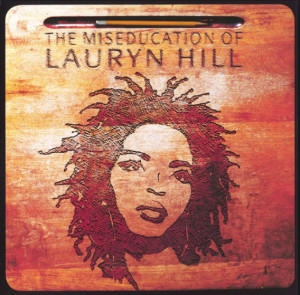 By the mid-1990s, the movement was gaining momentum, as Jamiroquai, D’Angelo, Meshell NdegeOcello, and The Fugees all came onto the scene. However, four albums are identified as the tipping point of the neo soul movement: 1995’s “Brown Sugar” by D’Angelo; 1996’s “Maxwell’s Urban Hang Suite” by Maxwel; 1997’s “Baduizm” by Erykah Badu; and 1998’s “The Miseducation of Lauryn Hill” by Hill, a former Fugees singer. On these four albums, there is an amazing nostalgic bridge established between the sounds of the ’60s and ’70s, paired with the lyrical content and realities of the ’90s.
By the mid-1990s, the movement was gaining momentum, as Jamiroquai, D’Angelo, Meshell NdegeOcello, and The Fugees all came onto the scene. However, four albums are identified as the tipping point of the neo soul movement: 1995’s “Brown Sugar” by D’Angelo; 1996’s “Maxwell’s Urban Hang Suite” by Maxwel; 1997’s “Baduizm” by Erykah Badu; and 1998’s “The Miseducation of Lauryn Hill” by Hill, a former Fugees singer. On these four albums, there is an amazing nostalgic bridge established between the sounds of the ’60s and ’70s, paired with the lyrical content and realities of the ’90s.
Then comes the flood. Courtesy of Motown Records’ Kedar Massenburg dubbing this musical style “neo soul,” there was now a new musical niche that needed to be filled. At the turn of the 21st century we were being introduced (or reintroduced) to a slew of artists now intentionally incorporating a neo-soul sound: Macy Gray, Jill Scott, India.Arie, Joss Stone, Ray Lamontagne, Ellis Hooks, Billy Miles, Amy Winehouse, Christina Aguilera, Duffy, Adele, Van Hunt, Corinne Bailey Rae and Amos Lee (just to name a few). Many of these artists dabbled with the sound for an album or two, but then evolved into different musical genres or just fell by the wayside.
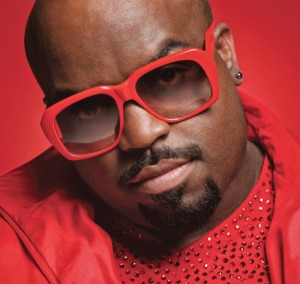 Still going strong today are Raphael Saadiq (a former member Tony! Toni! Tone!), Cee Lo Green, Sharon Jones & The Dap Kings, John Legend and The Roots. There are also those newer to the scene including Jose James, Kristina Train, Allen Stone, Eli “Paperboy” Reed, Jesse Dee, St. Paul & The Broken Bones, The Heavy, Cody Chesnutt, Frank Ocean, James Hunter and Bruno Mars.
Still going strong today are Raphael Saadiq (a former member Tony! Toni! Tone!), Cee Lo Green, Sharon Jones & The Dap Kings, John Legend and The Roots. There are also those newer to the scene including Jose James, Kristina Train, Allen Stone, Eli “Paperboy” Reed, Jesse Dee, St. Paul & The Broken Bones, The Heavy, Cody Chesnutt, Frank Ocean, James Hunter and Bruno Mars.
While this is an impressive list of performers, some of whom are already legends and Grammy winners, how many of these artists will be little more than minor side notes for a genre that became over-saturated and is now possibly in a state of decline? Is it the sheer number of neo soul artists that is responsible, or is it that some of these artists are just going through the motions and following the neo soul formula? And does it even matter if these artists are merely impostors, if it leads listeners to “discover” the true soul and R&B legends?
Here are some of the more recent additions to the neo soul movement. I’ll leave it up to you to decide if they’re disciples or genre-hopping copycats.
Cody Chesnutt (Marvin Gaye-inspired)
Jesse Dee (Jackie Wilson-inspired)
Mayer Hawthorne (Curtis Mayfield-inspired)
The Heavy (Sam & Dave-inspired)
Sharon Jones & The Dap Kings (Ike & Tina Turner-inspired)
John Legend (Stevie Wonder-inspired)
Eli “Paperboy” Reed (James Brown-inspired)
St. Paul & The Broken Bones (Al Green-inspired)
 © Adam Kukic, April 8, 2014
© Adam Kukic, April 8, 2014
Host & Producer, The Coffeehouse on WYEP 91.3fm
Sundays, 8 to 11 am EST
Streaming worldwide at www.wyep.org
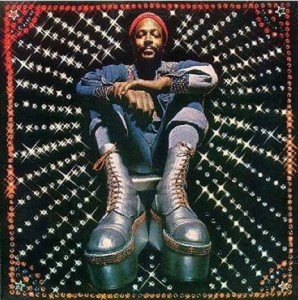 Singer/songwriter Marvin Gaye was one of Motown’s greatest recording artists, releasing two groundbreaking concept albums in the early 1970s: “What’s Going On” and “Sexual Healing.”
Singer/songwriter Marvin Gaye was one of Motown’s greatest recording artists, releasing two groundbreaking concept albums in the early 1970s: “What’s Going On” and “Sexual Healing.”
After seeing the soul man’s large collection of pornography, Rolling Stone critic David Ritz suggested that Gaye needed some “sexual healing.” This comment inspired the title of one of Marvin’s biggest hits. He and Odell Brown are credited as the song’s writers, with Ritz receiving a “special thanks” credit. But that wasn’t enough for Ritz. He allegedly wanted $10,000 for his contribution, and ended up suing Marvin for songwriting credit. The singer was shot and killed by his father on April 1, 1984, a day before his 35th birthday, so the suit was never settled. Eventually, Ritz did end up getting partial writing credit.
“Sexual Healing,” released in 1982, is No. 233 on the Rolling Stone list of its 500 Greatest Songs of All Time.
Here’s Marvin gettin’ some healing:
© Dana Spiardi, Aug 20, 2012
]]>